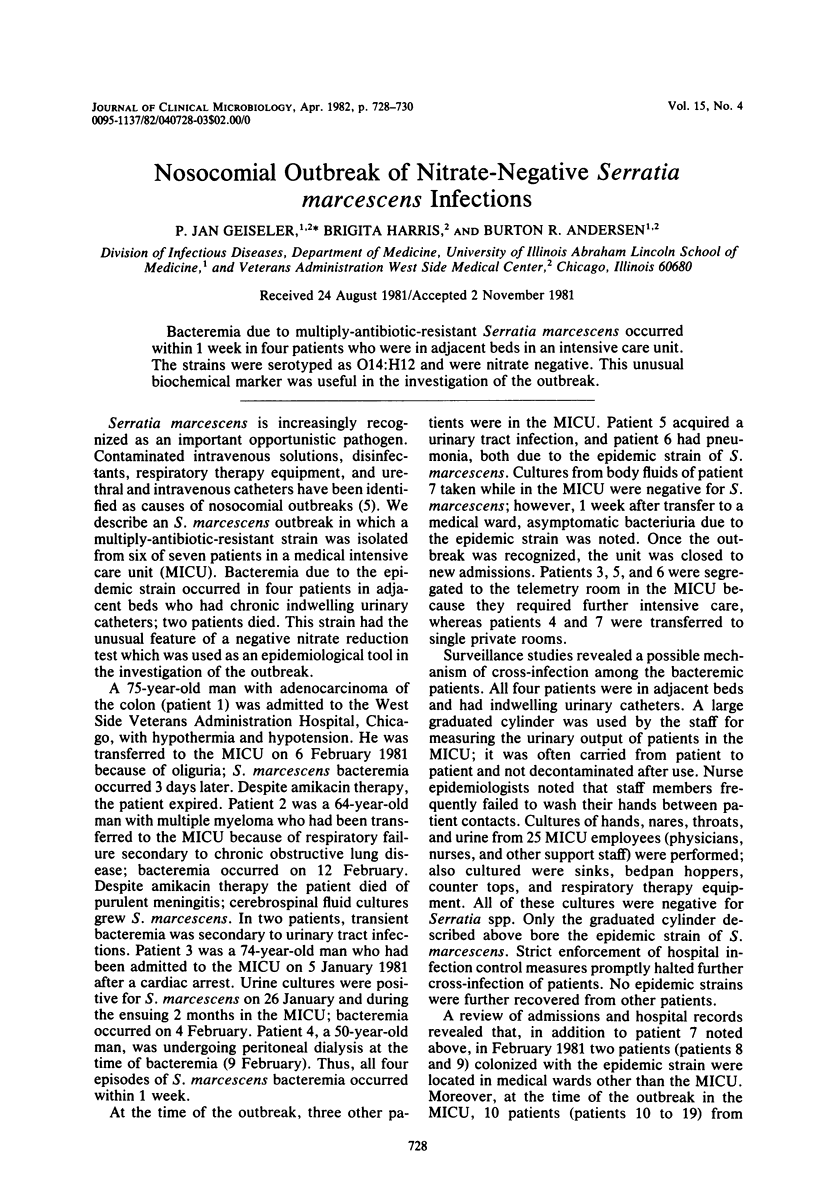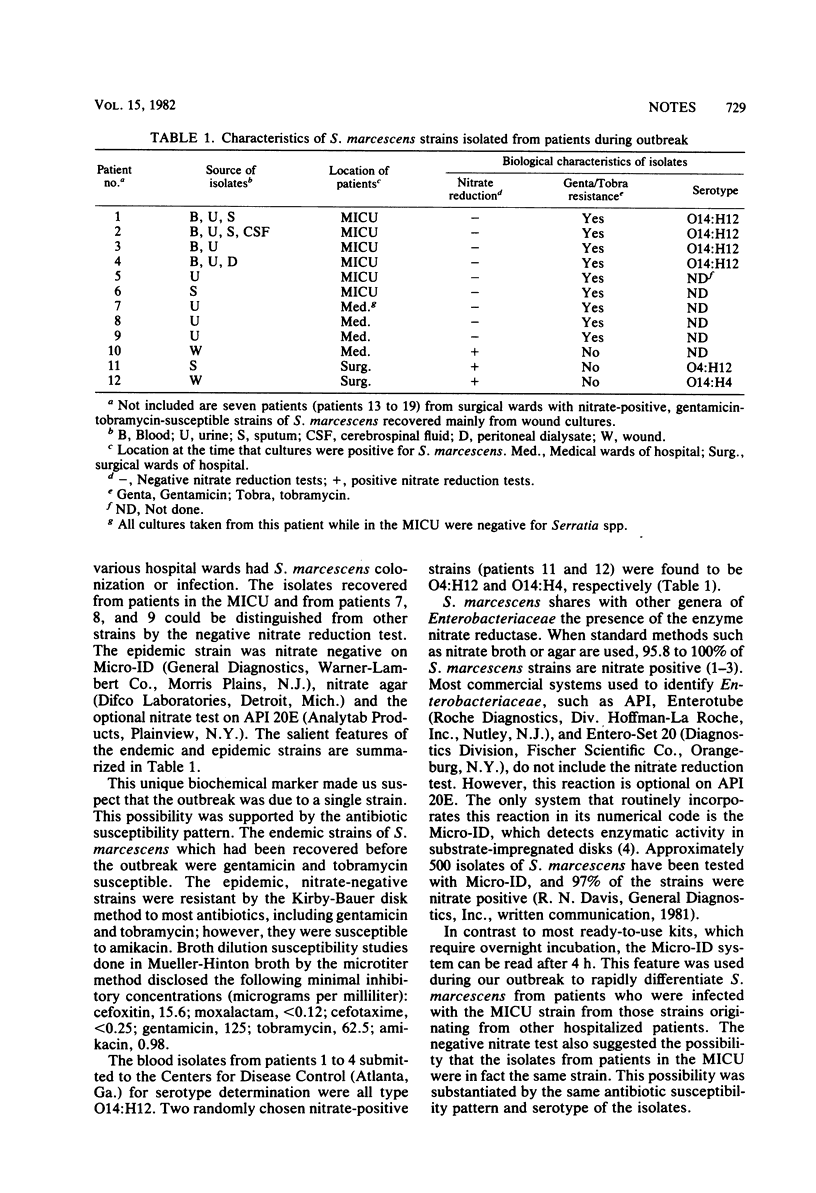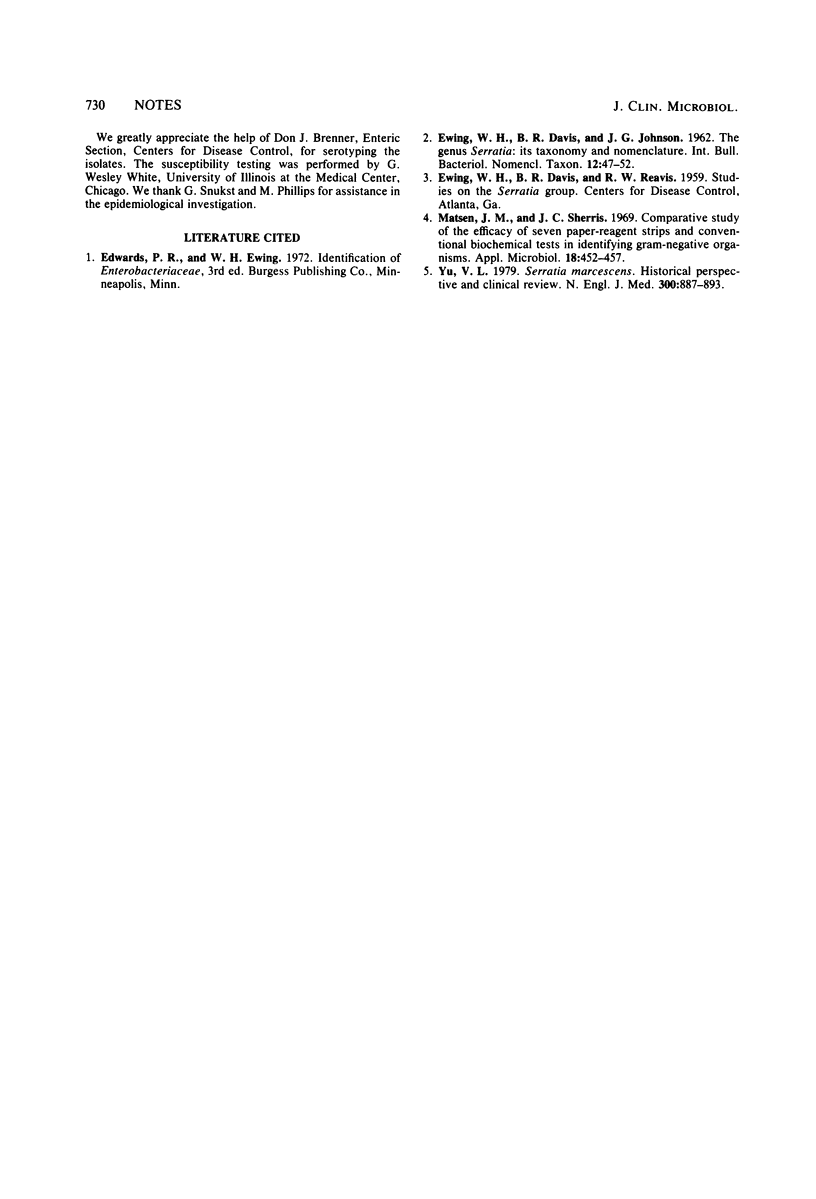Abstract
Bacteremia due to multiply-antibiotic-resistant Serratia marcescens occurred within 1 week in four patients who were in adjacent beds in an intensive care unit. The strains were serotyped as O14:H12 and were nitrate negative. This unusual biochemical marker was useful in the investigation of the outbreak.
Full text
PDF


Selected References
These references are in PubMed. This may not be the complete list of references from this article.
- Matsen J. M., Sherris J. C. Comparative study of the efficacy of seven paper-reagent strips and conventional biochemical tests in identifying gram-negative organisms. Appl Microbiol. 1969 Sep;18(3):452–457. doi: 10.1128/am.18.3.452-457.1969. [DOI] [PMC free article] [PubMed] [Google Scholar]
- Yu V. L. Serratia marcescens: historical perspective and clinical review. N Engl J Med. 1979 Apr 19;300(16):887–893. doi: 10.1056/NEJM197904193001604. [DOI] [PubMed] [Google Scholar]


